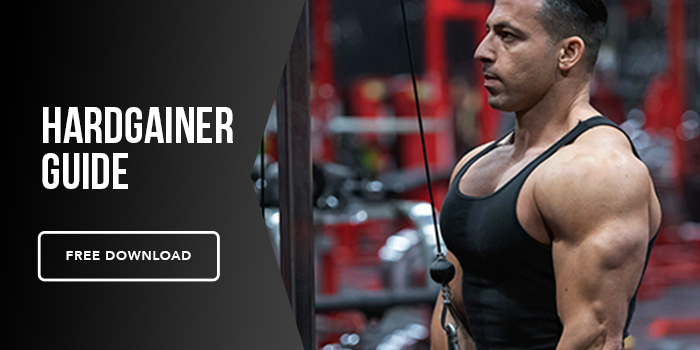This is a trick question. The hardest muscle to grow is individual to that person. It may be calves on one person, but abs on another. The best way to answer this wouldn’t be to make a hierarchy of hardest to grow muscles, but to understand why a muscle isn’t growing to begin with.
Mind Muscle Connection
If you have a body part that isn’t growing, it isn’t because that muscle just doesn’t grow. It’s a lack of connection to that muscle. When we workout a specific body part, we should be feeling THAT muscle contract, and being placed under tension through its full range of motion.
When I first started lifting I didn’t know this. My chest and biceps grew easily but my back went nowhere. I tried it all. I did low sets, high sets, spread it out over multiple back days, drop sets, you name it. Nothing seemed to work. I had assumed this entire time just because I had been doing back exercises that the back should just be growing like my chest and biceps did. It wasn’t till I worked with a bodybuilding coach that intent was everything. He made the SMALLEST adjustments in my form, and cues to make me focus HARD on making sure every second of that back exercise that I had placed focus on the back muscle being worked. It was FRIED off one exercise and I couldn’t believe it.
Try lowering the weight, and focusing on making sure you feel that muscle moving the entire time. What’s most likely happening is you are going too heavy or too fast. Slow down the tempo. Choose a weight you can do 10-15 reps with, while lowering the weight at a speed of 2-3 seconds. At the peak contraction try holding that end range for 2 solid seconds. These little tweaks will over time, allow you to practice feeling that muscle doing the work, and eventually create the right cues to get it to fire.
Appropriate Volume
Another factor to consider is having either too little or too much volume. Let’s take calves for example. A lot of people seem to struggle putting size into their calves. Let’s start off with what we know. You are presumably on your feet throughout the day. This means your calves are constantly being fired. That is high volume. So if they are already going through high volume (although at really low intensities) all day, then why would 3 sets at the end of a workout do anything extra for them?
Take the time to understand what that muscle does, and how much volume it then needs. The calf is also a much smaller muscle group than say the legs. You could do 15 reps of a squat and need 5 minutes to recover, whereas you can do 15 reps of standing calf raises and maybe need 1 minute to rest and find you can do another set. Experiment with that. If we know the calves need more volume, less rest, and recover quickly, you may find you can hit your calves over 2-3 workouts at up to 5-6 sets EACH workout. Because they’re already used to higher volume, you can experiment doing sets of 10-15, or 15-20 to tap into those slower twitch fibers. Combine that with the advice mentioned earlier on slow and controlled reps. I see so many guys doing low rep, and bouncing on the calf machine. If you are using momentum, then you aren’t allowing the muscle to build tension, and tension is what growth and muscular adaptation responds to.
Now, I know I only used the calves as an example, but those principles can be applied to any lagging muscle. Are your lower abs not growing? How much lower ab work do you do vs normal crunches or other ab work that predominantly hits the upper abs. Are you doing any chops or rotational movements to build the obliques which help completely a nice six pack look?
A quick guideline to recap:
1. Decide what muscle is lagging
2. Understand which way the muscle fiber runs
3. Choose an appropriate exercise that stresses the lagging muscle under the same direction the muscle fiber runs.
4. Take that exercise through 10-15 reps under a controlled tempo. You can have more freedom to experiment here whether it's 3 seconds lowering, a 2 second pause, or changing the rep range. The key for leaning more towards higher reps is to get the practice in on setting a good mind muscle connection.
5. Make sure your technique is flawless. No bouncing, or rushing. Always slow and controlled and going to 2-3 reps shy of technical failure.
6. Lastly, gauge your recovery and add more sets only as needed. Smaller muscle groups tend to recover faster and can POTENTIALLY (not always) be trained 3-4 times a week while bigger muscle groups may do better at 2-3. Again, it’s about experimentation and not adding so many sets you see a drop in performance.






